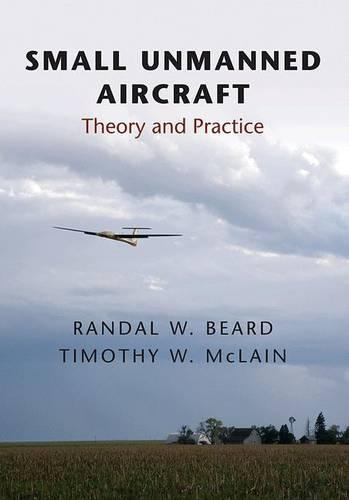
Small Unmanned Aircraft: Theory and Practice
(Hardback, 2nd edition)
Publishing Details
Small Unmanned Aircraft: Theory and Practice
By (Author) Randal W. Beard
By (author) Timothy W. McLain
Princeton University Press
Princeton University Press
8th May 2012
2nd edition
United States
Classifications
Tertiary Education
Non Fiction
Intelligent and automated transport system technology
629.133
Physical Properties
Hardback
320
Width 178mm, Height 254mm
794g
Description
Autonomous unmanned air vehicles (UAVs) are critical to current and future military, civil, and commercial operations. Despite their importance, no previous textbook has accessibly introduced UAVs to students in the engineering, computer, and science disciplines--until now. Small Unmanned Aircraft provides a concise but comprehensive description of the key concepts and technologies underlying the dynamics, control, and guidance of fixed-wing unmanned aircraft, and enables all students with an introductory-level background in controls or robotics to enter this exciting and important area. The authors explore the essential underlying physics and sensors of UAV problems, including low-level autopilot for stability and higher-level autopilot functions of path planning. The textbook leads the student from rigid-body dynamics through aerodynamics, stability augmentation, and state estimation using onboard sensors, to maneuvering through obstacles. To facilitate understanding, the authors have replaced traditional homework assignments with a simulation project using the MATLAB/Simulink environment. Students begin by modeling rigid-body dynamics, then add aerodynamics and sensor models. They develop low-level autopilot code, extended Kalman filters for state estimation, path-following routines, and high-level path-planning algorithms. The final chapter of the book focuses on UAV guidance using machine vision. Designed for advanced undergraduate or graduate students in engineering or the sciences, this book offers a bridge to the aerodynamics and control of UAV flight.
Reviews
"It is very nicely written with a presentation style that engineers in industry will appreciate. Most of the mathematics involved is very straightforward and the results are presented in a very clear manner. This is a text that should be very useful to those working on unmanned aerial vehicles and may even be of interest to those working on unmanned land or marine vehicles."--Applied Control Technology Consortium
Author Bio
Randal W. Beard is a professor in the Department of Electrical and Computer Engineering at Brigham Young University. He is the coauthor of "Distributed Consensus in Multi-vehicle Cooperative Control. " Timothy W. McLain is a professor in the Department of Mechanical Engineering at Brigham Young University.
